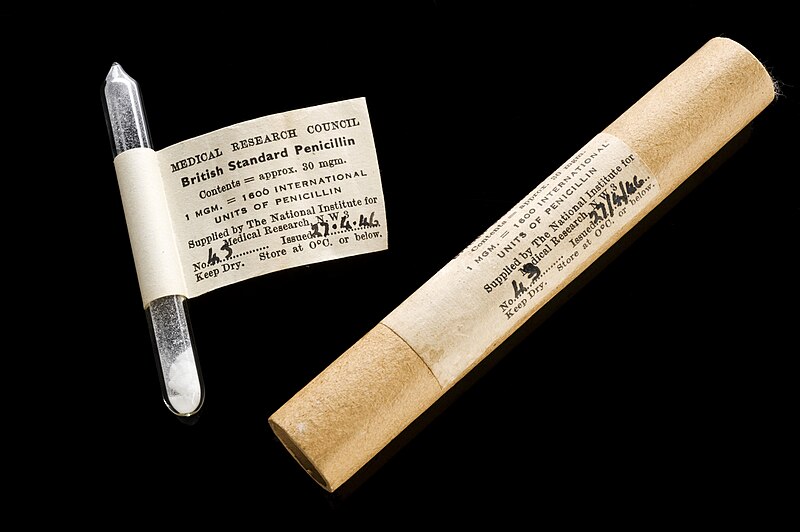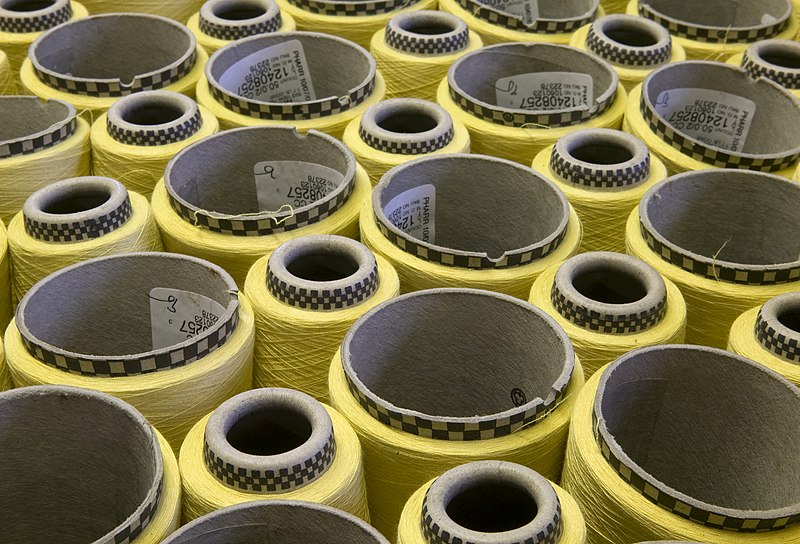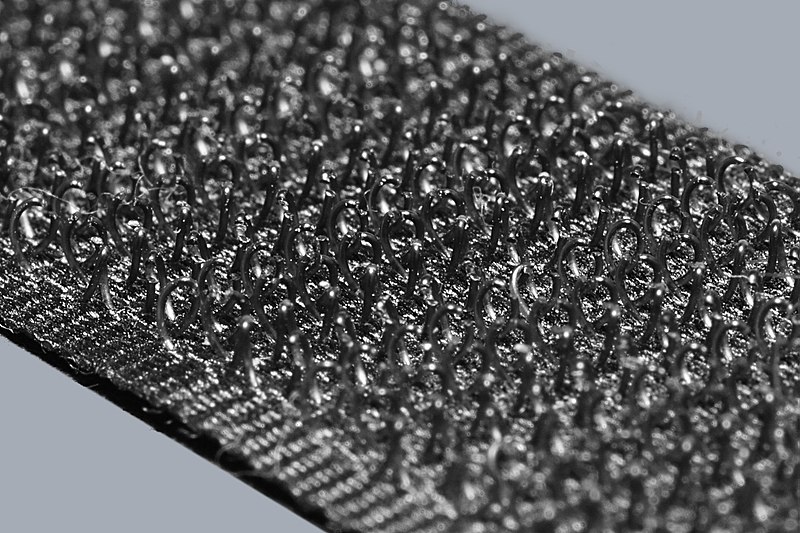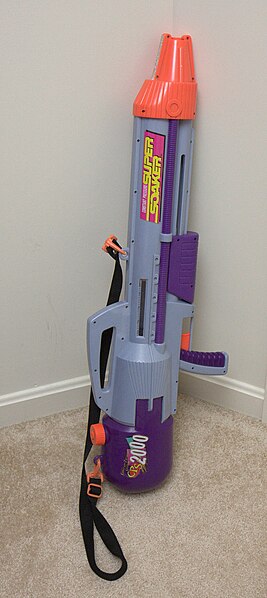
Taking the wrong exit on a highway, adding too much salt when cooking, or grabbing the wrong bag on the way to work — mistakes are a part of life. But, as the famed painter and TV host Bob Ross might suggest, mistakes are not always a bad thing; sometimes they’re just “happy little accidents”. In fact, many important inventions in the fields of chemistry, engineering, and medicine have been made as a result of accidents. Let’s explore five such examples.
1. Penicillin
Before the advent of antibiotics, life was dangerous. Diseases like tonsillitis, bronchitis, and pneumonia were deadly. Injuries that led to infection were often fatal. Lifesaving treatments that required immunosuppression, such as organ transplants, were an impossibility. However, in 1928, Scottish bacteriologist Alexander Fleming made a life-changing discovery involving the accidental growth of Penicillium mold.
The location of discovery was St. Mary’s Hospital in London. Fleming had just left for a summer vacation, leaving behind the cultures of Staphylococcus aureus, a bacterium he was studying, in a dark corner of his lab. Upon returning from his break, he and his research students, Daniel Pryce and Stuart Craddock, noticed a lid slightly ajar on one of the plates. Inside the plate, a teal-colored mold had grown, and notably, the bacterium was unable to grow in the area surrounding the mold.

A specimen of Penicillium rubens, the mold that had contaminated Fleming’s bacteria cultures. Licensed under CC BY-SA 4.0, via Wikimedia Commons.
While unsure of the exact origin of the mold, Fleming and his team took a sample and preserved the then-unknown mold before continuing their work. In the years that followed, Fleming continued to investigate the mold, which was later identified as Penicillium rubens. However, he was unable to achieve widespread success in its application. Fortunately, in 1939, a team of researchers led by Howard Florey picked up Fleming’s work and eventually succeeded in isolating and extracting the chemical penicillin, which is still used as an antibiotic today.

A glass phial of penicillin used in 1946. Licensed under CC BY-SA 4.0, via Wikimedia Commons.
2. The Modern Smoke Alarm
It’s easy to forget the small disk-shaped device that plugs into the ceiling of an office or bedroom, but the smoke alarm is one of the most important pieces of technology a person can own. In fact, a working smoke detector reduces the death rate in a house fire by around 60 percent. It’s hard to imagine homes and apartments without such an important tool, but were it not for an accidental discovery by Swiss physicist Walter Jaeger in the 1930s, we may have never gotten the modern smoke detector.

A modern smoke detector. Licensed under CC BY-SA 3.0, CC BY-SA 2.5, CC BY-SA 2.0, and CC BY-SA 1.0, via Wikimedia Commons.
Jaeger had not originally intended to create a smoke detector. Instead, he was working on creating an ionization sensor that could detect toxic gas. Jaeger predicted that poisonous gases would enter the sensor, bind to ionized air molecules, and cause a shift in the electric current of a circuit inside the device. However, the device failed to successfully detect small quantities of poison gas. According to legend, Jaeger sat back at his desk, lit a cigarette and suddenly the current in his device began to drop.
In the following years, other scientists continued work in this field. Ernst Meli, another Swiss physicist, developed a device capable of detecting gases in mines and a cold cathode tube that could extend the signal produced by these ionization chambers. In the 1960s, the first domestic smoke detector was developed by Duane Pearsall and Stanley Bennett Peterson, quickly bringing fire safety from mines and industrial buildings into homes.
3. Kevlar
It’s hard to believe that the strong, heat-resistant fiber used in protective gear, sports equipment, and musical instruments was created while trying to prepare for a gasoline shortage. But that’s exactly what happened with Kevlar. The strong synthetic fiber, invented by Stephanie Kwolek, wouldn’t exist today if she had simply thrown it out like usual waste products.

Spools of para-aramid yarn designed for use in body armor. Licensed under CC BY-SA 3.0, via Wikimedia Commons.
Kwolek was working as a chemist at DuPont, when she was tasked with inventing a lightweight fiber that could be used for stronger and lighter car tires due to an expected gas shortage. While working on the project, she tested a few different polymers in a solution that appeared cloudy and thin. Typically, such a solution would have been thrown away, but Stephanie took a risk and convinced her coworkers to test it. To their surprise, the fiber didn’t break and showed great promise. Eventually, it was developed into the Kevlar we know today.
While many know Kevlar for its use in body armor for military or police organizations, it also has applications in many other fields. It’s used for mooring lines on large ships and in sports equipment such as canoes and bow strings. Kevlar is also used in the covers of marching drums and loudspeaker cones. Kwolek’s accidental discovery even led to the rise of a new field of polymer chemistry.

A Kevlar racing canoe. Licensed under CC BY-SA 3.0, via Wikimedia Commons.
4. Hook-and-Loop Fasteners
Many scientists look to nature for inspiration. Some have looked to the kingfisher bird to design bullet trains, while others have looked to beavers to design a more effective wetsuit. However, this inspiration isn’t always intentional. This was the case for George de Mestral, the inventor of VELCRO® Brand fasteners, who made an astonishing discovery involving the burrs from the burdock plant.


Left: Burdock plant. Licensed under CC BY-SA 4.0, via Wikimedia Commons. Right: The hook side of VELCRO® Brand fasteners, the first hook-and-loop fastener. Licensed under CC BY 3.0, via Wikimedia Commons.
De Mestral was returning from a hike in the Alps when he began a task familiar to many hikers: removing the burrs that had stuck to his clothes and his dog’s fur. Struck by inspiration from the clingy plant, he decided to examine it under a microscope. Doing so, he discovered hundreds of tiny hook-shaped spines encircling the seed. These hooks would go on to become the driving force behind the creation of the fastener we now know as VELCRO® Brand fasteners.
De Mestral’s invention was initially rejected, but after using synthetic fibers instead of natural ones and finding a way to mechanize the process, his invention reached widespread success in the late 1950s. Now, VELCRO® Brand fasteners and other hook-and-loop style fasteners have applications in many industries. In clothing, it can be seen replacing buttons or zippers in coats, or laces in shoes. It is perhaps most known for its use by NASA, which uses the fastener to anchor equipment and in spacesuits.
5. The Super Soaker®
The sun beats down, turning the lawn a dusty brown color. Cicadas buzz in the trees as sweat drips down your forehead. Your neighbor returns from the side of the house, armed with your trusty Super Soaker® freshly reloaded from the spigot to combat the summer heat. This invention, created by NASA engineer Lonnie Johnson, was inducted into the American National Toy Hall of Fame in 2015. It ranks as one of the bestselling water toys of all time and was inspired by an accident.

A Super Soaker CPS2000, part of the “Constant Pressure System” series of Super Soaker. Licensed under CC BY-SA 3.0, via Wikimedia Commons.
Johnson, a prolific inventor responsible for over 100 patents, was working on developing a new type of heat pump that could use pressurized water instead of Freon® when suddenly a steady blast of water shot across the room. Struck by inspiration, he built a prototype using plexiglass, PVC pipe, and a soda bottle. This prototype eventually made its way to the Larami corporation and eventually became the Super Soaker® we know today.
Johnson didn’t stop there. He continued to work on both aerospace projects as well as the toy industry, eventually tweaking the design to create the Nerf N-Strike.
Further Reading
- While the above inventions are truly amazing, it’s important not to discount those whose inventions didn’t come about by accident. Read more about other inventors and their important creations below:
- Douglas Engelbart, who developed the computer mouse
- Olive Dennis, who pioneered comfortable passenger rail travel with her many innovations
- Elijah McCoy, who created a steam engine lubrication system that transformed the railroad industry
VELCRO is a registered trademark of Velcro IP Holdings LLC. Used with permission. Kevlar is a registered trademark of DuPont Safety & Construction, Inc. Super Soaker is a registered trademark of Hasbro, Inc. Freon is a registered trademark of The Chemours Company FC, LLC.



Comments (0)